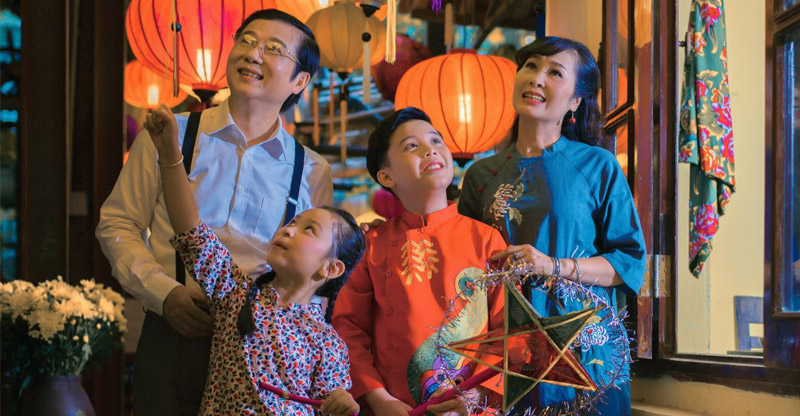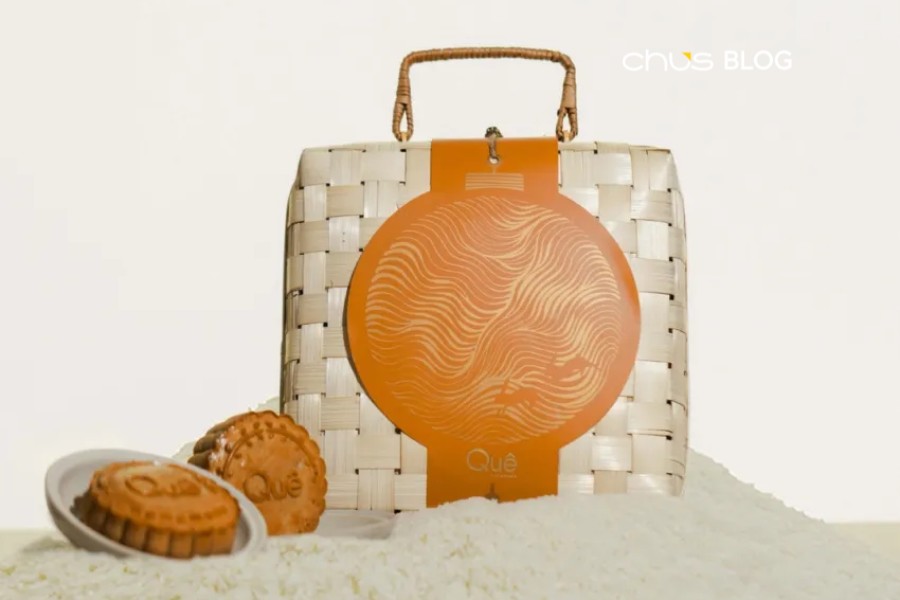- Sep 14, 2024
The Meaning of the Mid-Autumn Festival in Vietnamese Culture
The Mid-Autumn Festival, also known as the Festival of Reunion, is one of the most beloved traditional celebrations in Vietnamese culture. Every year, as the full moon of the eighth lunar month rises and casts its glow across villages and towns, it brings with it a wave of memories, traditions, and emotions that have been cherished by generations. Let’s explore the significance of this special occasion with Chus and see why the Mid-Autumn Festival is eagerly anticipated by so many in Vietnam.

What is the Mid-Autumn Festival? When does it occur?
The Mid-Autumn Festival takes place on the 15th day of the eighth lunar month each year, which falls in the middle of autumn when the moon is at its brightest and fullest. During this time, the full moon becomes a symbol of reunion, completeness, and unity. That’s why the festival is often referred to as the "Festival of Reunion," representing the hope that families can come together and celebrate under the warm glow of the full moon.
For Vietnamese people, the Mid-Autumn Festival is not just a time for children to enjoy mooncakes and lanterns. It’s also an opportunity for adults to express love and care through gifts and fun activities. Children eagerly look forward to the festival, not only for the sweet mooncakes but also for the traditional toys like star lanterns, carp lanterns, pull-along drums, masks, and fun games. The lively streets are filled with the sound of drums from lion dances and the vibrant colors of lanterns, creating a warm, joyful atmosphere for everyone.
In 2024, the Mid-Autumn Festival will fall on the 15th of the eighth lunar month, which corresponds to September 17 on the solar calendar. This promises to be a special occasion for families across Vietnam to welcome a festive season filled with love, laughter, and new hopes.

The Origin of the Mid-Autumn Festival in Vietnam
The Mid-Autumn Festival has its roots in Chinese culture over 3,000 years ago, but it has long become an integral part of Vietnamese tradition.
According to Phan Kế Bính’s "Vietnamese Customs," the Mid-Autumn Festival is known as the "Children’s Festival," closely tied to the custom of hanging lanterns and setting out offerings. This tradition may have originated during the reign of Emperor Tang Ming Huang of China, where lanterns and decorations were used to celebrate the emperor’s birthday. Over time, these customs made their way into Vietnam, becoming an essential part of Vietnamese culture.
The custom of lantern parades is said to have begun in the Song Dynasty when Bao Gong created carp-shaped lanterns to ward off evil spirits. While this story may be more myth than fact, it shows the deep-rooted traditions tied to the festival.
In Nguyen Van Huyen’s "Festivals and Holidays of the Vietnamese People," the Mid-Autumn Festival is also linked to a legend about Emperor Tang Ming Huang, who was invited by a Taoist priest to visit the moon on the night of the full moon in the eighth lunar month. There, the emperor witnessed celestial maidens dancing, which inspired him to hold a festival of music and dance during the Mid-Autumn Festival.
Henri-Emmanuel Souvignet’s 1903 work "Northern Vietnam Chronicles" notes that on the 15th day of the eighth lunar month, Vietnamese people have a tradition of making and eating mooncakes, a vital symbol of the festival.
Even in Le Van Sieu’s "History of Vietnamese Civilization," the Ngoc Lu bronze drum of the Dong Son culture from more than 2,500 years ago depicts rituals and festivals held during the eighth lunar month, aligning with the timing of today’s Mid-Autumn Festival.
The Meaning of the Mid-Autumn Festival
The Mid-Autumn Festival occurs during the harvest season, a time when farmers have completed their work and the fields are filled with abundant crops. This makes it not only a children’s festival but also a meaningful occasion for different social classes. For farmers, the Mid-Autumn Festival marks a time to pray for favorable weather and a fruitful harvest. For scholars and government officials, it symbolizes the hope for success and advancement in society, often represented by symbols like carp, golden toads, and scholar figures in the traditional toys and food offerings.
According to researcher Nguyen Van Huyen, the festival was also seen as an occasion for matchmaking, with young men and women meeting and forming relationships, some of which led to marriage. It was also a time of fortune-telling, with people reading the shapes and colors of the moon to predict the fate of the nation or upcoming seasons.
For children, the festival is a time of joy, with lantern parades, lion dances, and feasts. After the August Revolution of 1945, the festival coincided with the back-to-school season, adding the wish for academic success from parents to their children’s celebrations.

The Mid-Autumn Festival in Modern Vietnamese Life
Even in today’s fast-paced world, the meaning of the Mid-Autumn Festival remains cherished by the Vietnamese people. Traditional lanterns still light up the night, feast tables are prepared with care, and stories of the Moon Lady and the man in the moon, Cuội, continue to be told with the same enthusiasm as in the past.
In modern times, the festival has evolved to include contemporary celebrations and events that attract people of all ages. In large cities, festivals, parades, and performances entertain children and families, creating spaces for community connection. This shows that while times may change, the core values of the Mid-Autumn Festival—family, unity, and hope—continue to shine brightly.
Conclusion
The significance of the Mid-Autumn Festival remains undeniable in the hearts of Vietnamese people. No matter where they are or how much life has changed, the bright full moon of this festival serves as a reminder of the enduring values passed down through generations: family love, connection to one’s homeland, and a belief in a hopeful, prosperous future as full and bright as the moon itself.











